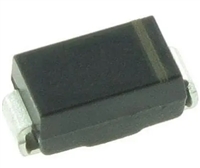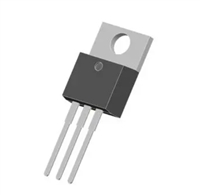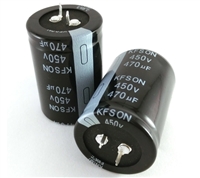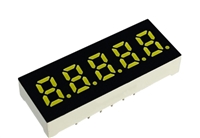| 是否无铅: | 不含铅 | 是否Rohs认证: | 符合 |
| 生命周期: | Obsolete | 零件包装代码: | QLCC |
| 包装说明: | QCCJ, LDCC28,.5SQ | 针数: | 28 |
| Reach Compliance Code: | compliant | HTS代码: | 8542.39.00.01 |
| 风险等级: | 5.54 | 计数方向: | BIDIRECTIONAL |
| 系列: | 100E | JESD-30 代码: | S-PQCC-J28 |
| JESD-609代码: | e3 | 长度: | 11.48 mm |
| 负载/预设输入: | YES | 逻辑集成电路类型: | BINARY COUNTER |
| 最大频率@ Nom-Sup: | 550000000 Hz | 工作模式: | SYNCHRONOUS |
| 湿度敏感等级: | 2 | 位数: | 6 |
| 功能数量: | 1 | 端子数量: | 28 |
| 最高工作温度: | 85 °C | 最低工作温度: | |
| 封装主体材料: | PLASTIC/EPOXY | 封装代码: | QCCJ |
| 封装等效代码: | LDCC28,.5SQ | 封装形状: | SQUARE |
| 封装形式: | CHIP CARRIER | 包装方法: | TAPE AND REEL |
| 峰值回流温度(摄氏度): | 260 | 电源: | -4.5 V |
| 最大电源电流(ICC): | 170 mA | 传播延迟(tpd): | 1.45 ns |
| 认证状态: | Not Qualified | 座面最大高度: | 4.57 mm |
| 子类别: | Counters | 表面贴装: | YES |
| 技术: | ECL | 温度等级: | OTHER |
| 端子面层: | Matte Tin (Sn) | 端子形式: | J BEND |
| 端子节距: | 1.27 mm | 端子位置: | QUAD |
| 处于峰值回流温度下的最长时间: | 40 | 触发器类型: | POSITIVE EDGE |
| 宽度: | 11.48 mm | 最小 fmax: | 550 MHz |
| Base Number Matches: | 1 |
| 型号 | 品牌 | 获取价格 | 描述 | 数据表 |
| SY100E136JC | MICREL |
获取价格 |
6-BIT UNIVERSAL UP/DOWN COUNTER |

|
| SY100E136JCTR | MICREL |
获取价格 |
6-BIT UNIVERSAL UP/DOWN COUNTER |

|
| SY100E136JZ | MICREL |
获取价格 |
6-BIT UNIVERSAL UP/DOWN COUNTER |

|
| SY100E136JZTR | MICREL |
获取价格 |
6-BIT UNIVERSAL UP/DOWN COUNTER |

|
| SY100E137 | MICREL |
获取价格 |
8-BIT RIPPLE COUNTER |

|
| SY100E137JC | MICREL |
获取价格 |
8-BIT RIPPLE COUNTER |

|
| SY100E137JCTR | MICREL |
获取价格 |
8-BIT RIPPLE COUNTER |

|
| SY100E137JZ | MICREL |
获取价格 |
8-BIT RIPPLE COUNTER |

|
| SY100E137JZTR | MICREL |
获取价格 |
8-BIT RIPPLE COUNTER |

|
| SY100E141 | MICREL |
获取价格 |
8-BIT SHIFT REGISTER |

|
 MBRS340T3G手册解读:参数说明、产品特性及应用
MBRS340T3G手册解读:参数说明、产品特性及应用

 PMOS管背靠背连接:串联还是并联?
PMOS管背靠背连接:串联还是并联?

 高压电解电容的分类与选型策略
高压电解电容的分类与选型策略

 数码管:基本概念、分类、技术发展及市场趋势
数码管:基本概念、分类、技术发展及市场趋势
